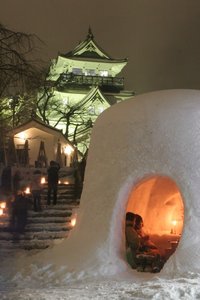

WARNING! Possible spoilers.

![[JPEG Image]](Frame02882.jpg)
![[JPEG Image]](Frame03271.jpg)


![[JPEG Image]](Frame07050.jpg)

![[JPEG Image]](Frame07616.jpg)
![[JPEG Image]](Frame07226.jpg)

![[JPEG Image]](Frame09272.jpg)


![[JPEG Image]](Frame13273.jpg)

 File:Kamakura-yuki.jpg
Credit: CC-BY-3.0 by (社)横手市観光協会
File:Kamakura-yuki.jpg
Credit: CC-BY-3.0 by (社)横手市観光協会
![[JPEG Image]](Frame17358.jpg)

![[PNG Image]](inakano_kyokai.png)

![[JPEG Image]](Frame18188.jpg)


![[JPEG Image]](Frame25700.jpg)

*He is a corrupt lawyer. Both in the original manga and in anime version, he tried to embezzle the inheritance of Chitose’s father (which is said to be at least tens of billions of yen), and tried to steal Gyopi-chan (a super-expensive goldfish). He was originally working for Chitose’s family (her father was a billionaire), taking care of their property. Perhaps Tanakayama was their personal lawyer. But — using the expression from manga tankōbon — he “betrayed” them (as explained above). It’s safe to assume that he was fired by them (by Chitose, or by her mother in Switzerland). According to the official canon (manga tankōbon), he then becomes a henchman of Yurika (Chitose’s rival), now freeloading in Tokaino Gakuen (Yurika’s school). Technically he is still a lawyer, but one can easily see that he is not working properly.
![[JPEG Image]](chabudai.jpg)

![[JPEG Image]](Frame26405.jpg)


![[JPEG Image]](Frame26555.jpg)


![[JPEG Image]](Frame28608.jpg)

![[JPEG Image]](Frame28608.jpg) vs.
vs. ![[JPEG Image]](utena16.jpg)

821C DADD 2C25 C86C 1754 6412 DD33 0238 68B5 8C64]![]() Our website is Tor-friendly & JavaScript-free.
Our website is Tor-friendly & JavaScript-free.